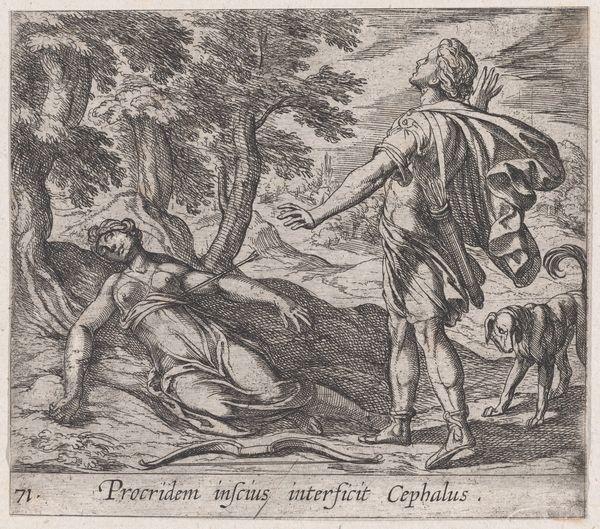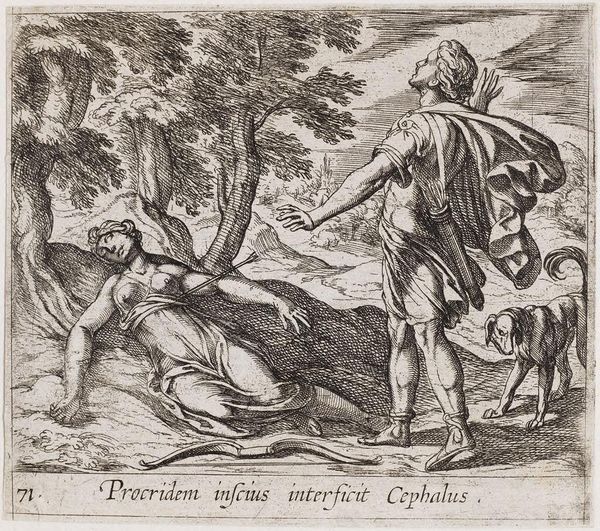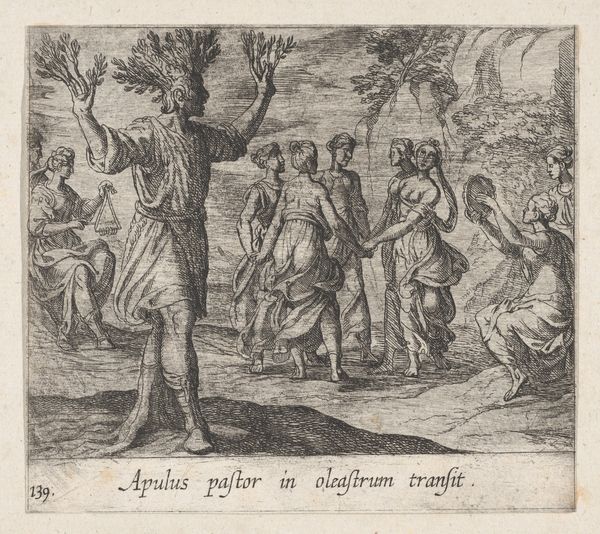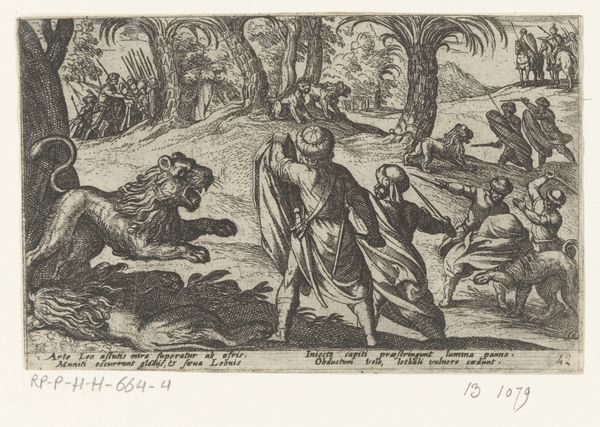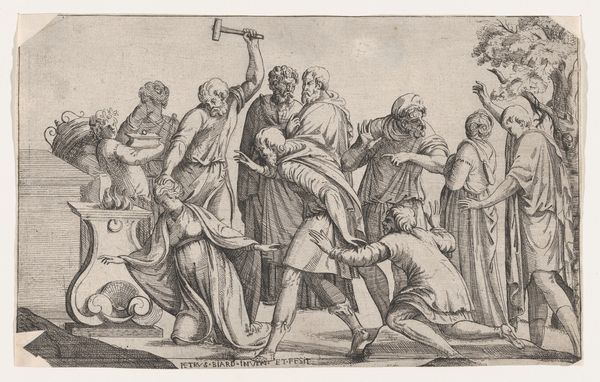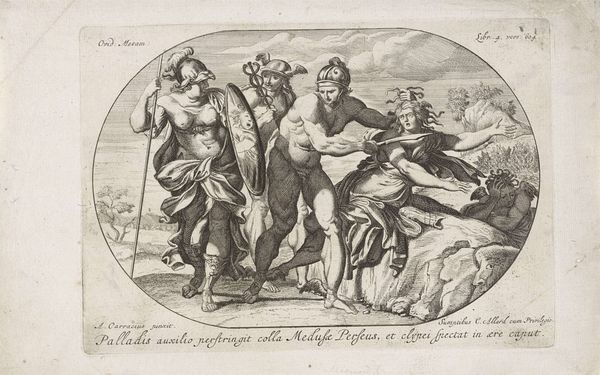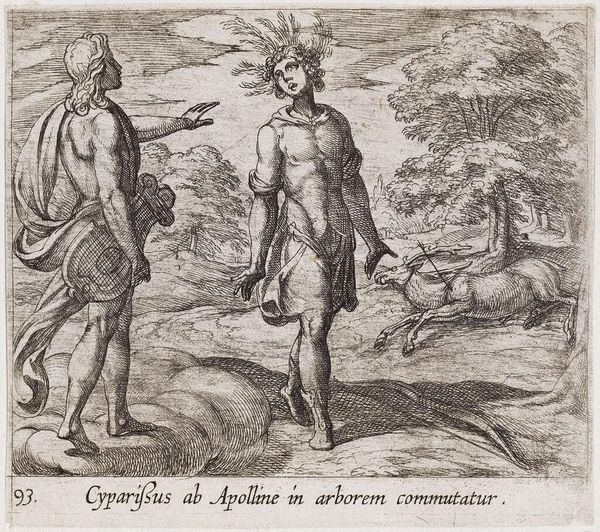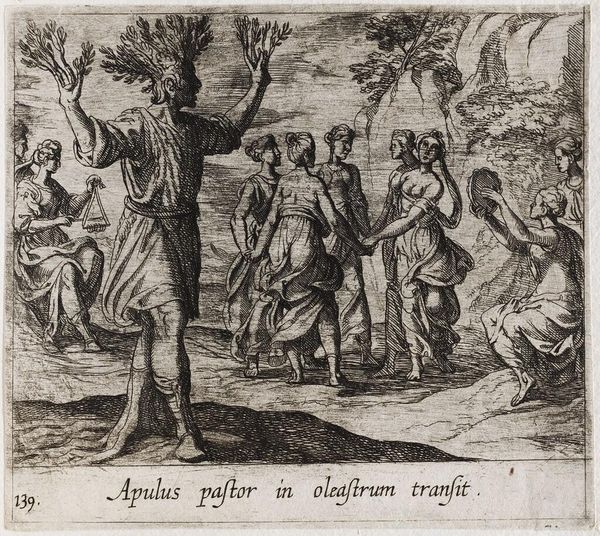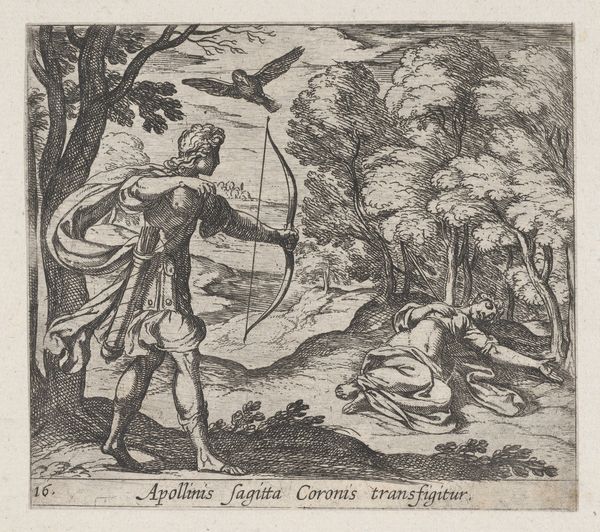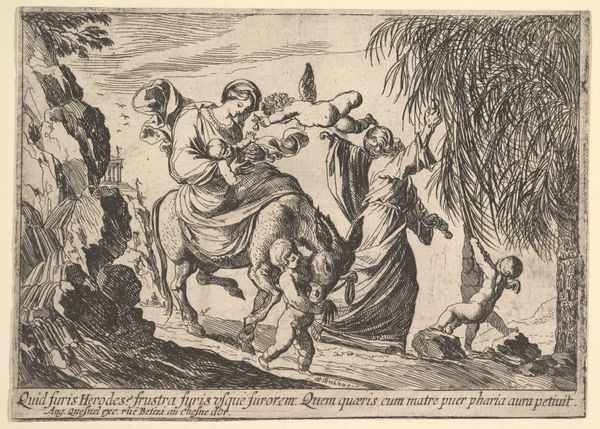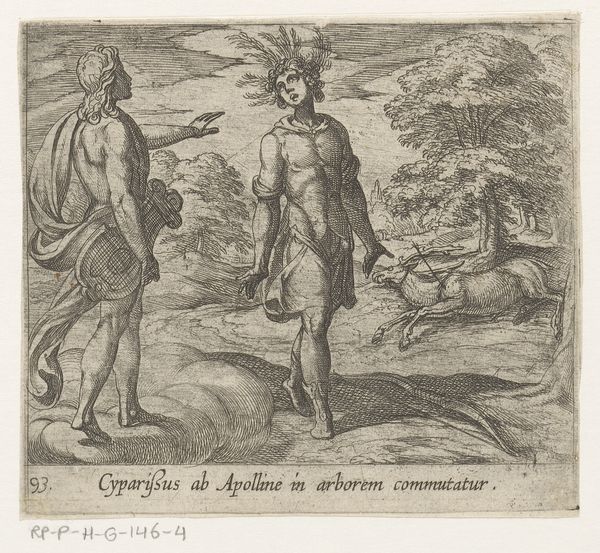
Plate 99: The Death of Orpheus (Orpheus a Bacchis discerpitur), from Ovid's 'Metamorphoses' 1606
0:00
0:00
drawing, print, engraving
#
drawing
#
allegory
# print
#
mannerism
#
figuration
#
history-painting
#
engraving
Dimensions: Sheet: 4 in. × 4 1/2 in. (10.2 × 11.5 cm)
Copyright: Public Domain
Editor: This is Antonio Tempesta’s 1606 engraving, “The Death of Orpheus from Ovid’s Metamorphoses,” currently at the Met. The chaotic energy is palpable, but it's also…elegant? The lines are so precise. What do you see in this piece? Curator: Beyond the graphic depiction of Orpheus's demise, I'm struck by how Tempesta captures the enduring power of myth through potent imagery. The Bacchantes, frenzied followers of Bacchus, become embodiments of unleashed, irrational forces. Editor: Irrational how? Curator: Their dismemberment of Orpheus isn't just violence; it's a symbolic rejection of order, reason, and Apollonian harmony, which Orpheus represents through his music. It's a clash of ideologies playing out through their bodies. See how their weapons are raised almost ritualistically? Editor: Yes, I notice that. So, it’s about more than just a story, it’s also an idea about the human condition. The terror. Curator: Precisely. Consider also Orpheus's lyre, discarded. A potent symbol of lost artistry and the silencing of poetic voice, replaced by primal, violent urges. The image serves as a memento mori and cautionary tale of passion without reason. Editor: That's… haunting, but also beautiful in a terrible way. I see a complexity here that wasn’t immediately evident. Thank you. Curator: And I appreciate your keen observation of both the chaos and the artistry within it. It underscores how symbols, even in scenes of destruction, continue to resonate and transmit cultural memory.
Comments
No comments
Be the first to comment and join the conversation on the ultimate creative platform.
